Did you know that the word “orchestra” literally means “dancing place” in Greek?
Of course, modern orchestras don’t include any dancing, but that’s just the beginning of the interesting world where instruments come together to create unforgettable music.
Today, I’ll be answering the question “What is an orchestra?” by explaining everything you need to know about it, from its definition and history to its sizes, groups, and layouts.
What is an Orchestra?
An orchestra is a group of instrumentalists who play together to create a coherent piece of music, mostly Classical music.
These instruments are typically a diverse assortment from the bowed string, woodwind, brass, and percussion families.
An orchestra could also refer to the space in front of the main stage in a theater that’s usually reserved for the musicians or the chorus.
What Does an Orchestra Mean in Music?
In music, an orchestra is a gathering of musicians who play various instruments in a harmonized and organized manner to produce a coherent musical composition.
How Big is an Orchestra?
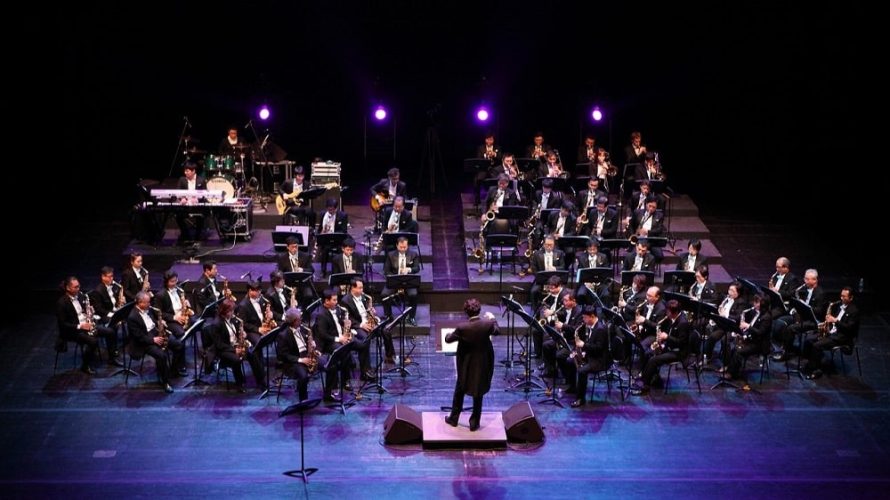
When the word orchestra comes up, most people think of the full-sized ensembles with dozens of instrumentalists playing together under the guidance of a conductor, but that’s not necessarily the case.
A group of fewer than 30 instruments is called an orchestra just as an ensemble of more than 100 instruments is also called an orchestra.
The distinction between different sizes of orchestras is represented with a word before the word “orchestra”.
For example, a small orchestra is known as a “chamber orchestra” while a large orchestra is known as a “philharmonic orchestra”.
We’ll discuss the multiple sizes of an orchestra later on.
What Instruments are Featured in an Orchestra?
In an orchestra, the instruments played aren’t restricted to a particular family of instruments.
Any given orchestra – no matter its size – typically features instruments from the string family (such as the violin and the cello), woodwind family (such as the clarinet and the flute), brass family (such as the trombone and trumpet), and percussion family (such as the bass drum and the snare drum).
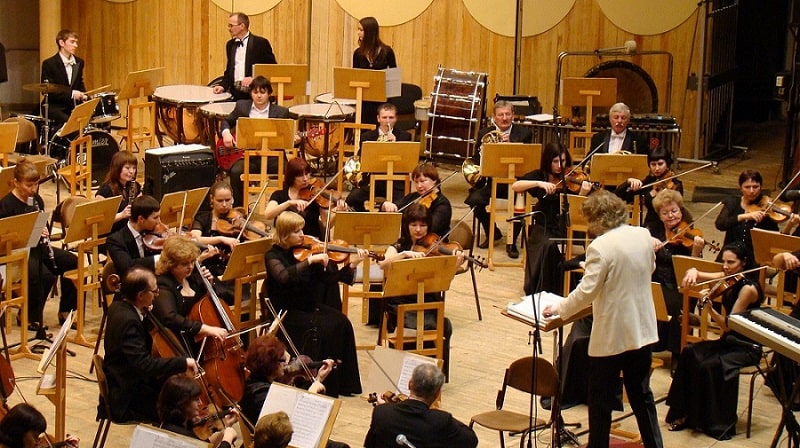
These instruments are then grouped together based on their family and divided into sections.
As such, most orchestras usually consist of 4 sections of instruments.
However, some orchestras will feature a 5th section known as the keyboard section to include instruments such as the piano and the celesta.
These instruments can also be included in an orchestra as a stand-alone soloist instrument without a dedicated section.
The concert harp is another fine example of a soloist instrument that gets featured in operas without being part of a section.
If the orchestra is playing a modern piece, it can also include electronic instruments such as electric guitars.
Who Leads an Orchestra?
Typically, the person who leads an orchestra is known as a conductor.
The conductor uses their hands and arms to convey the playing directions and instructions, where one hand usually holds the tempo/beat and the other hand provides cues to entire sections or individual musicians for when to play and when to stop.
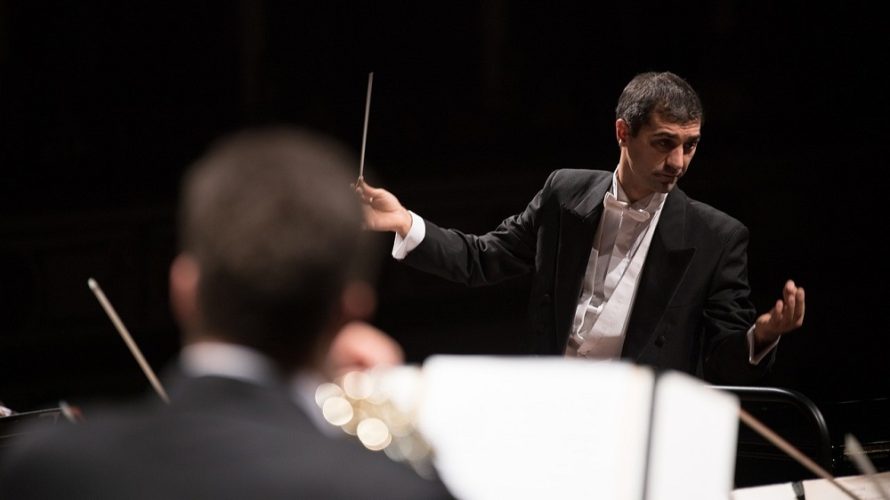
To make it easier for members of the orchestra to see the hand movements of a conductor, a baton was introduced.
Yes, the infamous “stick” that a conductor holds. Here’s what some of a conductor’s gestures mean:
- The downward motion of the tempo hand refers to a downbeat.
- The upward motion of the tempo hand refers to an upbeat.
- A pointed index finger of the non-tempo hand means “enter” or “cut off”.
- The pulling in of the non-tempo hand while closing the fingers and thumb will cause a musical phrase to fade away.
Now, let’s take a look at a couple of the responsibilities of an orchestral conductor:
- Directing the performance.
- Setting the tempo.
- Unifying the sound of the orchestra.
- Shaping the sounds of the sections.
- Leading rehearsals.
What Type of Music Does an Orchestra Play?
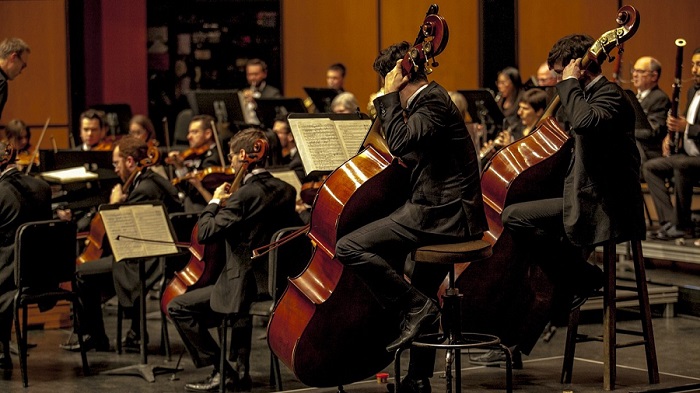
An orchestra plays a wide range of music types including overtures, ballets, operas, concertos, symphonies, and even musical theater arrangements.
History of the Orchestra
Now that you have a better idea of what an orchestra is, let’s briefly talk about the history and origins of the orchestra.
Putting a bunch of musicians together and having them play various instruments is by no means something new.
In fact, it’s the exact opposite – this has been happening for thousands of years!
So when did the shape of the modern orchestra start to make an appearance? Well, that actually didn’t occur until around 4 centuries ago.
The 16th Century
This century housed the musical period known as the Renaissance.
During these times, the term “consort” came to life as it was used to give a label to an ensemble of musicians who play instruments to create music together.
Sometimes, they were accompanied by singers.
“Consort” is derived from the expression “in concert”, which means “acting jointly”.
Back in those days, instrumentalists played whatever was available. This led to 2 things:
- The absence of standard sections within the ensemble.
- Composers had to write pieces suitable for playing on any instrument to accommodate availability issues.
The 17th Century
Moving onto the 17th century, the previous randomness was to be given order thanks to Claudio Monteverdi.

He was an Italian pioneer composer who totally changed the shape of consort music.
Unlike the past Renaissance consort music, Monteverdi chose the exact types of sounds he wanted for his opera (he created that genre by the way!).
Consequently, he included specific instructions for the types and numbers of instruments that’ll play his composition.
The Renaissance consort became the Baroque orchestra, with sections of instruments similar to what you can see today.
The main difference was that the string family was significantly dominant back then, so its section was far larger and more diverse than other instrument families.
The 19th Century
During this century, the roles of woodwind, brass, and percussion families became more prominent, thanks to the development of their respective instruments.
Yes, string instruments were still as vital as ever (if not more), but being able to depend on and incorporate the sounds of other types of instruments more effectively enabled compositions to be more complex and refined.
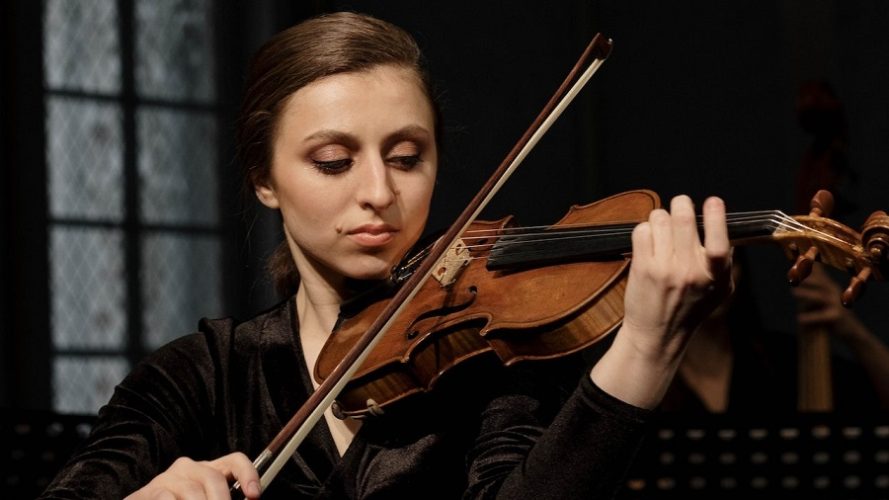
That said, the first violinist – also called the concertmaster – had the responsibility of leading the orchestra while sitting in the chair.
However, someone else had to lead the performance as larger orchestras came about and it became difficult for instrumentalists in other sections and even within the string section to see the first violinist.
Enter the conductor.
Pretty much all conductors of this time were also the composers of the music played by the orchestra. This allowed them to better translate their vision into the performance.
Composers of the 1800s had to learn the details of the sounds of the different instruments in each section.
This was the only way they could utilize the various capabilities of all these instruments in their grand composition.
Examples of composer-conductors of the 19th century include Felix Mendelssohn, Carl Maria, Verdi, Strauss, and Wagner.
The 20th Century
The 1900s marked a period of experimentation and liberation for the orchestra.
It was also when the standard form of the orchestra as we know it today really solidified, featuring a large string section and a bit smaller woodwind, brass, and percussion sections.

The role of the conductor especially took off in the 20th century, resulting in a lot of great conductors such as Claudio Abbado, Sir John Eliot Gardiner, Eugene Ormandy, and Leonard Bernstein.
Anatomy of an Orchestra
With the knowledge of what an orchestra is and how it came about, it’s time you join me in taking a dive into the practical world of an orchestra.
Sizes
First things first, let’s start with the different sizes of the orchestra.
Generally speaking, the size of an orchestra belongs to one of the following categories:
Chamber Orchestra
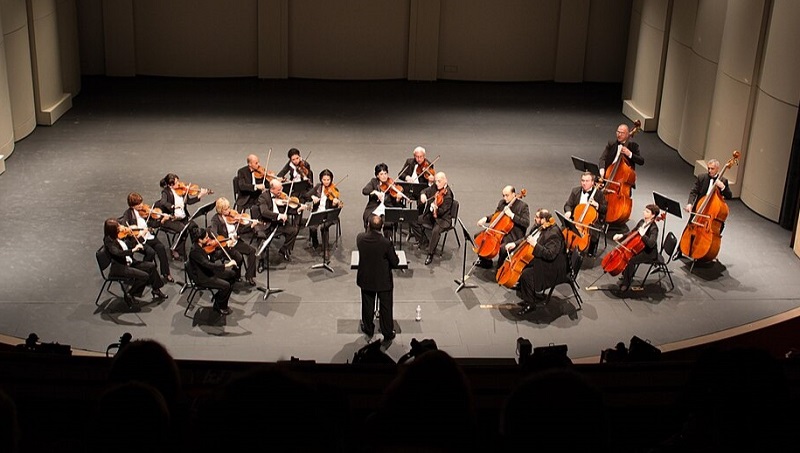
The smallest classification of an orchestra, a chamber orchestra usually refers to an ensemble of fewer than 50 instruments.
Typically, the fewest number of instruments that can be called a chamber orchestra is 25.
The term “chamber music” appeared in the 1600s as upper-class folk and royals of Europe hired musicians to play in a “chamber” as entertainment for their guests.
As such, the group of instrumentalists had to be relatively small.
Unlike larger orchestras, the music created by a chamber orchestra is mainly classical.
Here, each musician has to play a certain part of the piece, even if they’re playing the same instrument.
Due to their smaller size, chamber orchestras don’t typically operate with a conductor as they simply don’t need one.
Musicians can clearly see each other and have an easier time communicating with one another.
They rehearse together in a more engaging way, which helps them better know their musical partners compared to large orchestras, leading to a more dynamic relationship.
So instead of a conductor, the leading role is more of a collaboration between members of the orchestra.
The older, more experienced musicians can be relied on to provide leadership guidance.
Sinfonietta
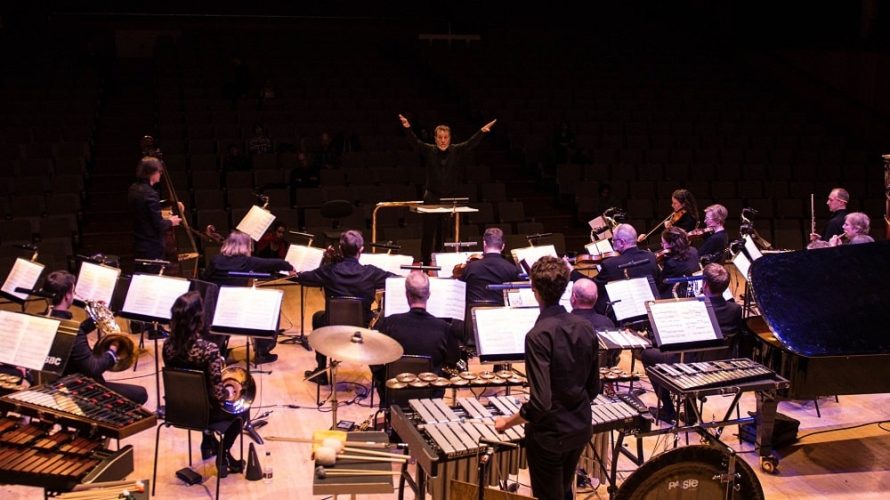
Although the term isn’t frequently used, the sinfonietta orchestra lies somewhere between 40 and 80 instruments.
The word “sinfonietta” is Italian and translates into “little symphony”. Think of it as a big chamber orchestra or a small symphony orchestra.
Once again, the use of sinfonietta to describe the size of an orchestra is diminishing because it’s simpler to just classify it as a chamber or a symphony orchestra.
Symphony Orchestra
When an ensemble features between 50 and 100 instruments, it’s usually referred to as a symphony orchestra.
The music played by these instruments is called a symphony, which is a distinct form of classical music.
Due to the large size of a symphony orchestra, there’s a great need for someone to lead the ensemble and direct its performance.
As such, any symphony orchestra has a conductor leading its rehearsals and live performances.
Instruments in a symphony orchestra feature the 4 main families (string, woodwind, brass, and percussion instruments) with the musicians seated in a specific layout. More on this in a bit.
Philharmonic Orchestra
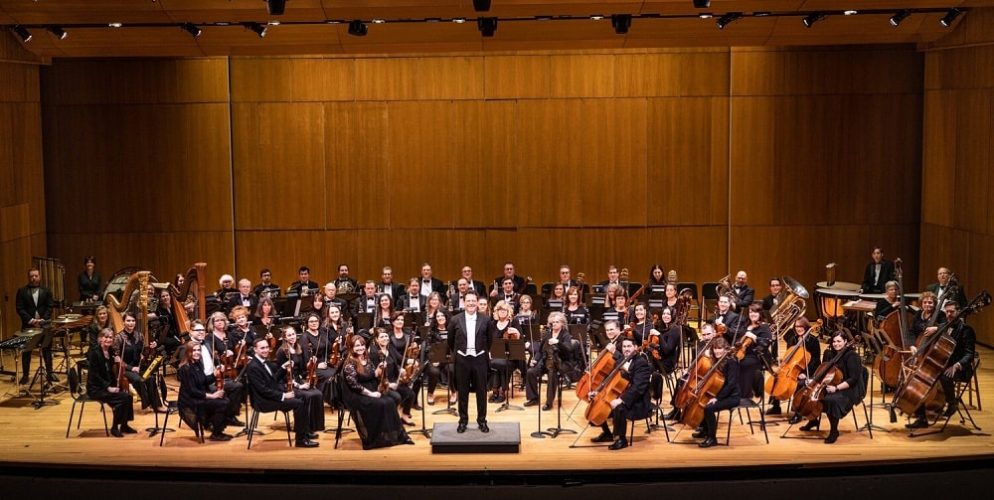
A philharmonic orchestra is an instrumental ensemble of typically more than 100 instruments.
The word “philharmonic” is derived from Greek words that translate into “harmony lovers”.
Back in the day, a philharmonic orchestra referred to any orchestra constructed by a philharmonic society.
In the modern world, however, the term “philharmonic orchestra” is used interchangeably with “symphony orchestra” to describe a full orchestra.
This term also helps differentiate between multiple major orchestras in the same city.
A philharmonic orchestra, like a symphony orchestra, consists of instruments from the string, woodwind, brass, and percussion families.
It’s also led by a conductor due to the huge number of instruments involved and the high complexity of the compositions played.
Classical music is the main form of music you’ll hear by a philharmonic orchestra, but it can also play in other genres such as Pop, film, Electronic, and video game music.
Groups
As I mentioned several times earlier, instruments in an orchestra are typically grouped into 4 sections: string, woodwind, brass, and percussion.
Each family of instruments has a distinct sound and the number of its members depends on the size of the orchestra, as well as the type of music it’s meant to play.
Let’s have a closer look at each section:
String Section

The string family is the most heavily represented type of instrument in an orchestra.
Instruments in this section include the violin, the cello, the viola, and the double bass.
As the largest section of an orchestra, strings are the primary instrumentation elements of most compositions.
Note that the string instruments featured in orchestras are bowed, where sound is produced by drawing a bow across the instrument’s strings and the subsequent resonation through its wooden body.
This is compared to string instruments struck by hand.
Woodwind Section
Smaller than the string section, the woodwind section includes instruments such as the flute, the clarinet, the bass clarinet, the oboe, the piccolos, the bassoons, the contra-bassoons, and the English horns.
As the name suggests, woodwind instrumentalists play by blowing into the instrument while adjusting the generated sounds and tones using keys built into the instrument’s body.
Brass Section
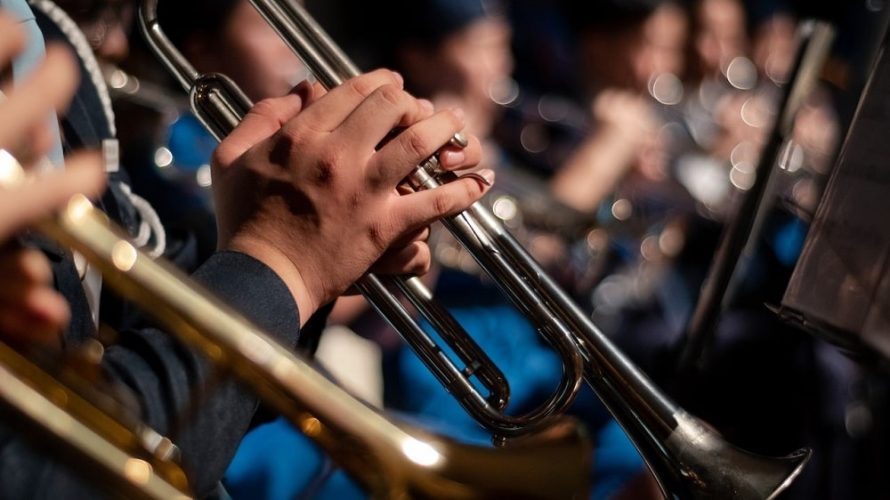
The brass section is also smaller than the string section.
Here, instruments are characterized by their shiny, polished appearance and their deep, powerful sounds.
Examples of brass instruments include the French horn, the tuba, the trombone, and the trumpet.
Similar to the woodwind section, brass instrumentalists play by blowing into the hollow instrument while adjusting the produced sounds and tones via built-in keys.
Percussion Section
The last of the main sections in an orchestra is the percussion section.
While its size differs depending on the composition, it’s usually the smallest section.
Instruments of the percussion family include the bass drum, the snare drum, the timpani, the cymbals, the tambourine, and the triangle.
Percussion instrumentalists play by striking the body of the instrument with a stick or with another part of the instrument.
The intensity of the strike and the location of the strike can affect the sound produced.
5th section
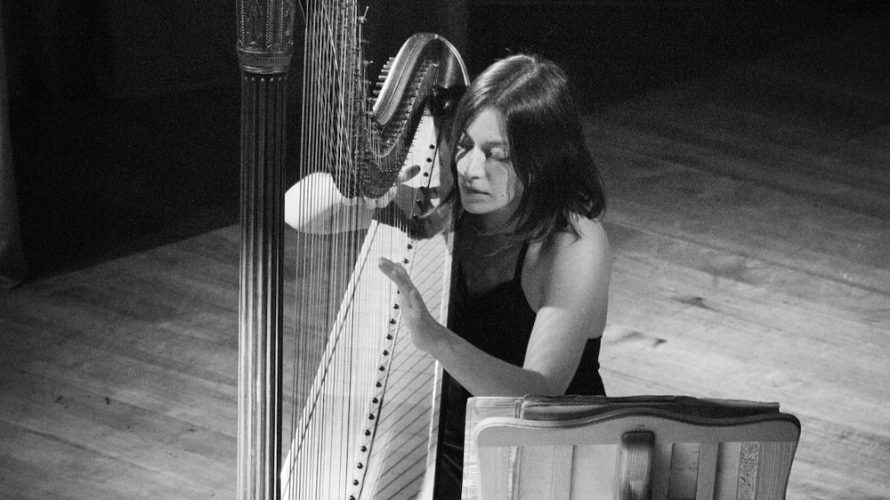
Besides the 4 main instrument sections mentioned above, an orchestra can also feature a 5th section dedicated to keyboard instruments such as the piano, the celesta, and the harpsichord.
These instruments can also be present in an orchestra as stand-alone soloist instruments.
Another example of a soloist instrument that can be included in an orchestra is the concert harp.
Also, the orchestra can feature an electric guitar or a variety of other electronic instruments if the piece played is a modern composition with such elements.
Layouts
Last but not least in the anatomy of an orchestra, I’ll be explaining the layout.
The layout of an orchestra is the way its instruments are organized.
This includes the location of each section on the stage and the seating arrangement of the musicians.
The goal of the layout of an orchestra is to give the listener the best possible acoustic experience that relays the effect of the musical piece.
The most common layout of an orchestra is a semi-circle.

The conductor is always at the center in front of all the sections, with the instruments arranged as follows:
- The string section is at the very front, closest to the conductor. Violins and violas are usually to the right and the cellos to the left in front of the basses.
- The woodwind section is right behind the string section.
- The brass section is behind the woodwind section off-center and to the left.
- The percussion section is in the very back to the far left.
So how did this particular configuration of instruments come about in the orchestra? Well, the general rules go like this:
- Instruments belonging to the same family are grouped together in the same area.
- Instruments that produce quieter and softer sounds are more difficult to hear, so they’re placed at the front to be the closest to the listeners.
- Instruments that produce louder and harsher sounds are easier to hear, so they’re placed farther back so as to not assault the hearing of the audience and overpower the other instruments.







